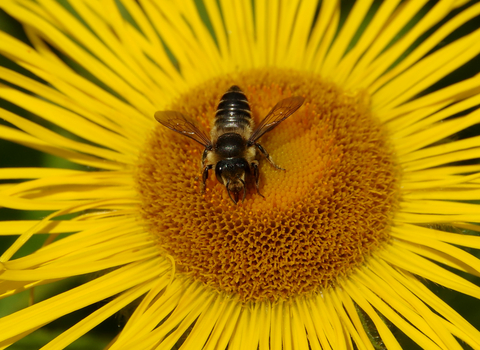
Patchwork Leaf-cutter Bee ©Gillian Day
Patchwork leaf-cutter bee
The appearance of semi-circular holes in the leaves of your garden plants is a sure sign that the patchwork leaf-cutter bee has been at work. It is one of a number of leaf-cutter bee species present in the UK.
